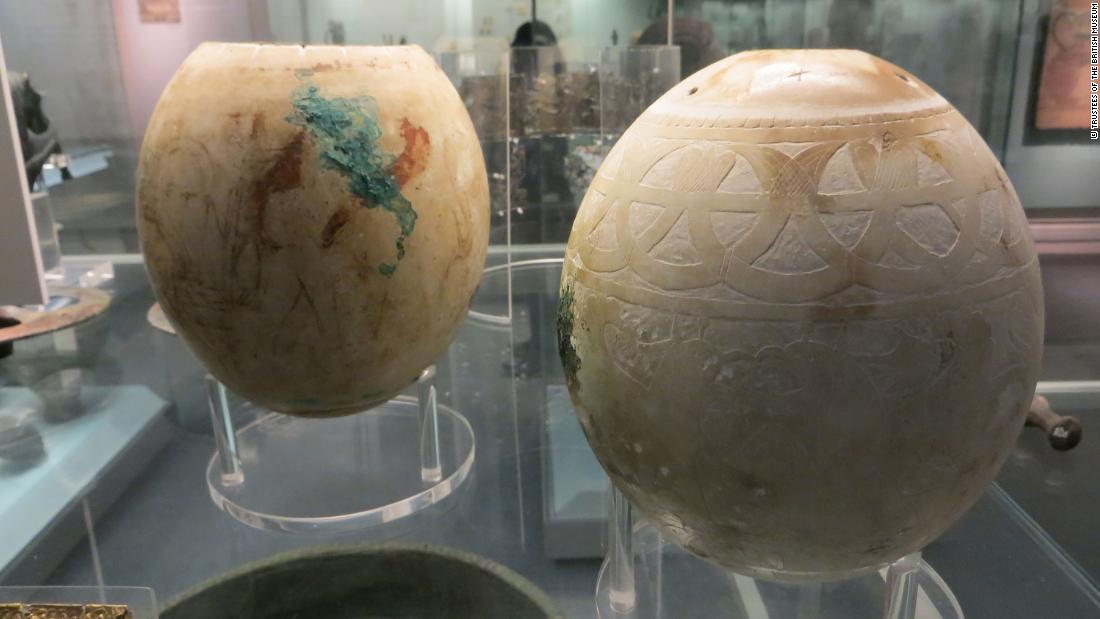[ad_1]
So, just in time for Easter, researchers re-examined a group of five eggs which were on display at the British Museum in London and found that their origin story was “much more complicated than we had imagined.”

A decorated egg from the Isis Tomb, Vulci, Italy. Credit: © Trustees of the British Museum
The team, from the universities of Bristol and Durham, found that the eggs were traded around a vast region in the Mediterranean after being taken from wild birds’ nests — no easy feat, given that ostriches can be dangerous animals. Their study has been published in the journal Antiquity.
The large area around which they were traded suggests that the ancient world “was much more interconnected than previously thought,” Tamar Hodos, reader in Mediterranean Archaeology in Bristol’s School of Arts, said in a press release.
“Using a variety of isotopic indicators, we were able to distinguish eggs laid in different climatic zones (cooler, wetter and hotter, drier). What was most surprising to us was that eggs from both zones were found at sites in the other zone, suggestive of more extensive trade routes,” Hodos added.
The eggs on display at the museum were found in the Isis Tomb, an elite burial in Italy, and were dated to around 625 to 550 BC.
Four of the eggs are carved and painted, while one is only painted. Their motifs include animals, flora, geometric patterns, soldiers and chariots, and all were fashioned into vessels with metal attachments — none of which survived.
“We also found eggs require time to dry before the shell can be carved and therefore require safe storage. This has economic implications, since storage necessitates a long-term investment and this, combined with the risk involved, would add to an egg’s luxury value,” Hodos said.
[ad_2]
Source link

